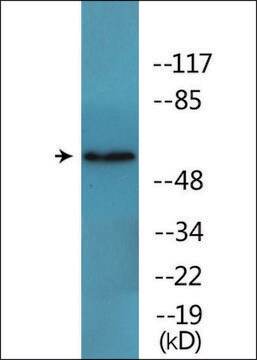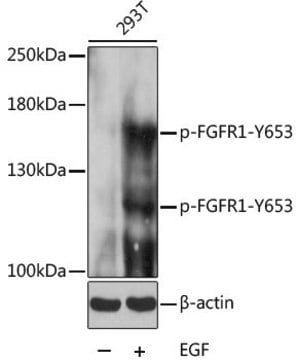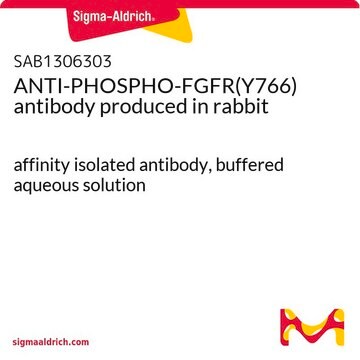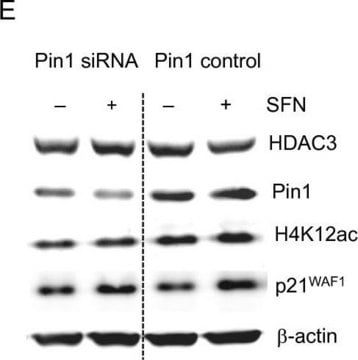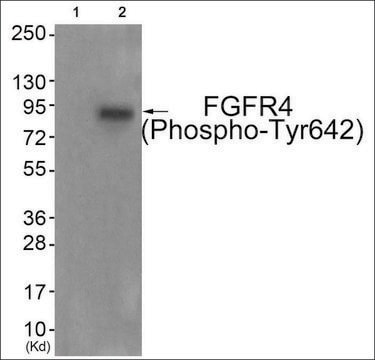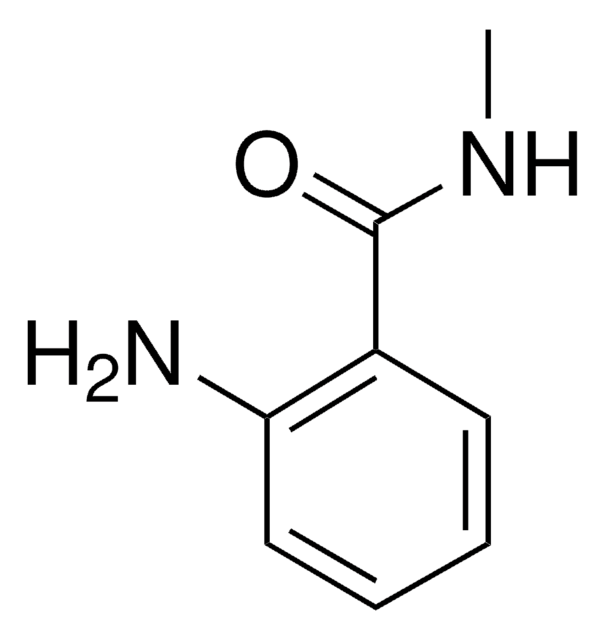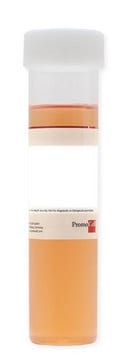06-1433
Anti-phospho-FGFR-1 (Tyr653/Tyr654) Antibody
from rabbit, purified by affinity chromatography
Synonym(s):
Basic fibroblast growth factor receptor 1, FGFR-1, bFGF-R-1, Fms-like tyrosine kinase 2, FLT-2, Proto-oncogene c-Fgr, CD331
About This Item
Recommended Products
biological source
rabbit
Quality Level
antibody form
affinity isolated antibody
antibody product type
primary antibodies
clone
polyclonal
purified by
affinity chromatography
species reactivity
human
species reactivity (predicted by homology)
Xenopus (based on 100% sequence homology), mouse (based on 100% sequence homology), zebrafish (based on 100% sequence homology), chicken (based on 100% sequence homology), bovine (based on 100% sequence homology), rat (based on 100% sequence homology)
packaging
antibody small pack of 25 μg
technique(s)
cell based assay: suitable
western blot: suitable
NCBI accession no.
UniProt accession no.
shipped in
ambient
target post-translational modification
phosphorylation (pTyr653/pTyr654)
Gene Information
human ... FGFR1(2260)
General description
Specificity
Immunogen
Application
Inflammation & Immunology
Cytokines & Cytokine Receptors
Quality
Western Blot Analysis: 0.2 µg/mL of this antibody detected FGFR-1 in 10 µg of untreated and lambda phosphatase-treated HEK293T cells transfected with FGFR1.
Target description
FGFR-1 has 19 isoforms and eight potential glycosylation sites that increase the expected size to 120 kDa for the immature form and 145 kDa for the mature form of the receptor (Hisaoka, K., et al. (2011). JBC. 286(24):21118-21128).
Physical form
Storage and Stability
Analysis Note
Untreated and lambda phosphatase-treated HEK293T cells transfected with FGFR-1
Other Notes
Disclaimer
Not finding the right product?
Try our Product Selector Tool.
Certificates of Analysis (COA)
Search for Certificates of Analysis (COA) by entering the products Lot/Batch Number. Lot and Batch Numbers can be found on a product’s label following the words ‘Lot’ or ‘Batch’.
Already Own This Product?
Find documentation for the products that you have recently purchased in the Document Library.
Our team of scientists has experience in all areas of research including Life Science, Material Science, Chemical Synthesis, Chromatography, Analytical and many others.
Contact Technical Service